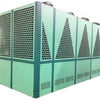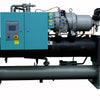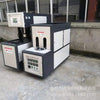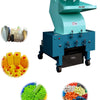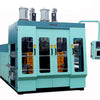Design, Operation, and Application of a 1-Liter Extrusion Blow Molding Machine Abstract
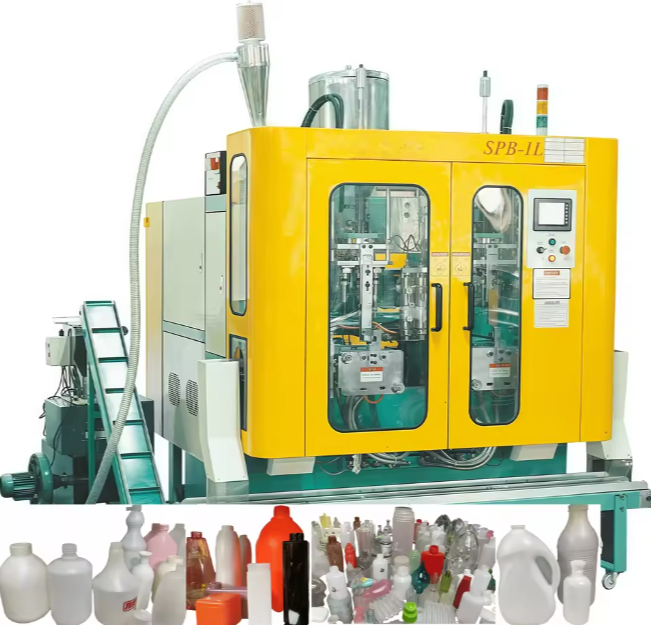
1. Introduction
Extrusion blow molding has become one of the most important processes in the plastics industry, particularly for manufacturing hollow articles such as bottles, fuel tanks, and containers. Among various EBM machines, those designed for 1-liter capacity products are especially significant due to their widespread use in beverage, pharmaceutical, and household chemical packaging.
The demand for lightweight, cost-effective, and recyclable plastic containers continues to grow globally. According to recent market reports, the global blow molding market is projected to exceed USD 120 billion by 2030, driven largely by innovations in machinery efficiency and material science [1]. In this context, compact and efficient 1L-capacity EBM machines offer an optimal balance between production scale and operational flexibility.
This paper focuses on the technical aspects of a standard 1-liter extrusion blow molding machine, covering its working principle, key subsystems, process optimization, and real-world applications. The goal is to provide a holistic understanding of how such machines contribute to modern plastic manufacturing.
2. Working Principle of Extrusion Blow Molding
The extrusion blow molding process consists of three main stages: extrusion, inflation, and ejection.
-
Extrusion: Thermoplastic resin (typically PE or PP) is fed into the extruder barrel, where it is heated and plasticized by a rotating screw. The molten polymer is then forced through a die head to form a continuous tube called a parison.
-
Inflation: The parison is captured between two mold halves. Compressed air is introduced into the parison, inflating it against the cooled mold walls to take the desired shape.
-
Ejection: After sufficient cooling, the mold opens and the finished part is removed. Excess flash is trimmed and recycled.
For a 1L machine, the parison length and diameter are precisely controlled to ensure uniform wall thickness and structural integrity of the final product.
3. Machine Components and System Design
A typical 1L EBM machine comprises the following subsystems:
3.1 Extruder Unit
- Screw Diameter: 45–65 mm
- L/D Ratio: 24:1 to 30:1
- Drive Power: 15–30 kW
- The extruder ensures consistent melt homogeneity and stable output rate (~30–50 kg/h).
3.2 Die Head Assembly
- Accumulator-type or continuous die heads are commonly used.
- For 1L bottles, a shuttle or rotary die head enables faster cycling.
- Die diameter is typically 30–50 mm, adjustable for different materials.
3.3 Parison Control System
- Programmable logic controllers (PLCs) regulate screw speed, melt pressure, and parison timing.
- Variable wall thickness control (VWTC) systems adjust die gap dynamically during extrusion to compensate for sag and ensure even distribution.
3.4 Mold Clamping and Cooling
- Clamping force: 30–60 tons
- Mold material: P20 or H13 steel with water-cooling channels
- Cycle time: 8–15 seconds per bottle
3.5 Auxiliary Equipment
- Air compressor (0.7–1.0 MPa)
- Material drying hoppers
- Conveying and recycling units for regrind
4. Process Parameters and Optimization
Optimizing the following parameters is critical for quality and efficiency:
| Parameter | Typical Range | Effect |
|---|---|---|
| Melt Temperature | 180–220°C | Affects flow and weld strength |
| Blow Pressure | 0.4–0.8 MPa | Influences surface finish and detail replication |
| Cooling Time | 5–10 s | Determines cycle time and dimensional stability |
| Screw RPM | 40–80 | Controls output rate and melt quality |
Statistical process control (SPC) and DOE (Design of Experiments) methods are recommended for fine-tuning these variables.
5. Applications and Industry Relevance
1L EBM machines are extensively used in:
- Beverage packaging (water, juice bottles)
- Household cleaners (detergents, shampoos)
- Pharmaceutical containers
- Food packaging (cooking oil, sauces)
Their modular design allows quick changeover between mold sets, making them ideal for contract manufacturers serving diverse clients.
6. Challenges and Future Trends
Despite their advantages, 1L EBM machines face several challenges:
- Material Waste: Flash generation can reach 15–20% without proper recycling.
- Wall Thickness Variation: Gravity-induced parison sag affects uniformity.
- Energy Consumption: Heating and cooling cycles account for ~60% of total energy use.
Emerging trends aim to address these issues:
- Integration of AI-based parison prediction models
- Use of bio-based polymers (e.g., PLA, PHA)
- Adoption of servo-driven hydraulics for energy savings (up to 30%)
7. Conclusion
The 1-liter extrusion blow molding machine plays a vital role in the sustainable production of plastic containers. Through precise control of process parameters and continuous technological advancements, these machines deliver high-quality products with improved efficiency. As environmental regulations tighten, future developments will likely focus on reducing waste, enhancing recyclability, and integrating smart manufacturing technologies. Engineers and operators must stay abreast of these trends to remain competitive in the evolving plastics industry.
-
Posted in
extrusion blow molding machine

